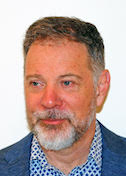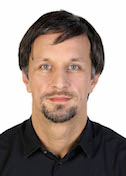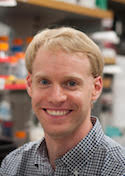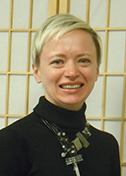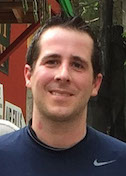Jason Key, Ph.D.
Associate Director of Technology and Innovation
Published August 8, 2014
Master of Many
Jason Key happened upon an ad for a job at SBGrid while browsing a CCP4 bulletin board. He was over 4 years into his second post-doc, at University of Texas Southwestern using NMR to study mammalian oxygen sensing proteins. His previous post-doc had been in Amsterdam at an ultra fast laser lab studying photoreceptors. And before that, he’d been a graduate student at the University of Chicago doing x-ray crystallography.
In other words, he’d just about done it all, which is exactly what the job called for. “I have this broad background and decent computer skills,” says Key, Technical Project Leader at SBGrid. “It sounded like an ideal mix of everything I do.”
He applied in June 2012 and started just a few months later. Today, Key’s main responsibility is consulting for a group of laboratories at Harvard Medical School and assisting them with computing needs pertaining to structural biology. As an example, he helps electron microscopy labs that have large data sets manage the storage, transfer and computational processing of their data on Harvard’s Orchestra computing cluster. “It’s not always trivial to figure out how to adapt a piece of software to run on the computing cluster. I help the labs think about the computing so they can think about the science,” says Key.
In his spare time, Key is leveraging the Open Science Grid to build an add-on to the existing Wide Search Molecular Replacement database. This database plus the computing power of the Open Science Grid allow users to take a data set and look for a match among the 100,000-plus known protein structures as a way to help jump-start the solving of a structure.
Adding to that, Key is creating a database of structures of proteins that have been co-crystallized with fragment antigen-bindings (FABs), the head domains of antibodies. This database can also help users solve structures through the same type of search mechanism. “We’re in the process of analyzing these structures biochemically to see how structurally diverse the set of proteins is,” he says.
Another SBGrid service Key manages is the SBGrid Webinar program, a series of online presentations by developers of the software packages SBGrid distributes. “It’s great for the community,” says Key. “These presentations help users get over that initial barrier to getting started.”
Developers wanting to do an SBGrid Webinar can simply email Key to get on the schedule. “For developers, it’s nice to build a community around the software, to see that people are interested and the work is worth while. But also,” says Key, “it’s fun.”
-- Elizabeth Dougherty



























